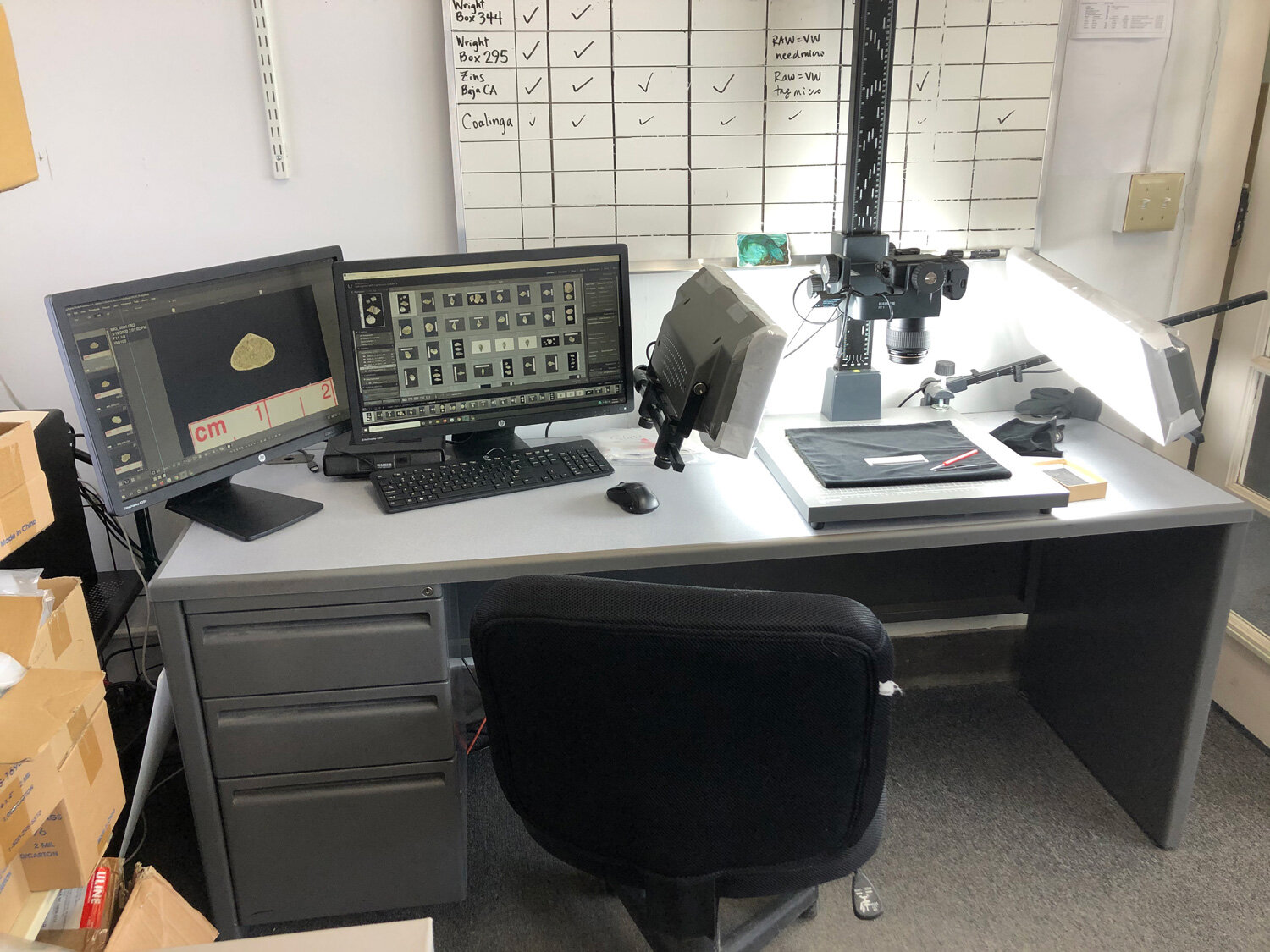How Does Collections Work from Home?
by Jaleigh Pier
Last updated March 28, 2020
As you may know, Andrew Cuomo, the governor of New York State, declared that 100% of non-essential workers must stay home beginning Sunday evening, March 22nd, for an indeterminate amount of time.
Here at the Paleontological Research Institution, with our public venues (Museum of the Earth and Cayuga Nature Center) closed through at least mid-April, much of our staff have already transitioned to working remotely. This has provided us an opportunity to move forward with several online resources for students, teachers, and families alike. (Discover some of these resources here!; be sure to also check out the Digital Atlas of Ancient Life, one of my favorites, which I even got the chance to contribute to!)
However, what about staff who rely on physical access to fossil specimens within the research collections? I am currently a Collections Assistant at PRI, tasked with digitizing our research collections. Mostly this involves taking pictures of fossil specimens and uploading them to several online databases (Specify, iDigBio) and websites (priweb.org, digitalatlasofancientlife.org). Anyone in the world can access these resources and see what kinds of fossils we have.
We have two photography workstations in our collections workroom at PRI, which makes it possible to take incredible images of even the tiniest of fossils. Between technology, equipment, and specimen access, working from home seemed like an impossible option. Nevertheless, desperate times calls for desperate measures.
Currently, I am digitizing specimens for the Eastern Pacific Invertebrate Communities of the Cenozoic (EPICC) project. This project involves photographing fossil specimens from west coast of North and South America. Only fossil animals without a backbone (invertebrates) that date from the time dinosaurs went extinct (66 million years ago) to the present are included. This era of Earth's history is known as the Cenozoic. EPICC is a collaboration of eight museums across the United States, all working together to make research collections more accessible through online platforms such as iDigBio. You can learn more about this National Science Foundation-funded project here. The goal is to digitize at least 1.6 million specimens by this summer; PRI has less than 2,000 specimens to go!
After hearing about the “shelter in place” order issued for all of New York State on Friday March 20th, I spent the entire afternoon panic packing. Not only did I pack up an entire photography workstation to bring home, but I also filled a second car load full of fossil specimens to photograph (literally thousands of specimens).
Thousands of fossils boxed up and ready to transport! Source: Jaleigh Pier.
Next was figuring out how to create a home office where I could safeguard my prehistoric treasures from my furry housemate (instantaneously promoted to furry coworker).
My housemate, turned coworker (a.k.a., my cat Petrie). Source: Jaleigh Pier.
Thankfully, I happened to have a second bedroom, which I like to refer to as my “glorified closet.” You might be able to fit a twin-sized bed in there, but not much else. So, naturally, this had been my furry housemate’s play-room. After another afternoon’s efforts, a personal office took shape, complete with a photography station and enough fossils to keep me preoccupied for at least a few weeks.
Left: Temporary home office photography workstation. Right: Boxes of fossils waiting to be photographed. Source: Jaleigh Pier.
Typically, this would not be allowed under normal circumstances. My heart goes out to the thousands of museum employees all over the world who are temporarily separated from their beloved specimens. I am extremely grateful to my supervisors for making it possible to still work from home during these uncertain times.
This unexpected turn of events does allow me the chance to test out the macro camera lens. This lens is specialized to take images of specimens mere millimeters in size, with the capability to zoom in on minute features. However, it has turned out to be a rather finicky piece of equipment and is taking much trial and error. Additionally, tiny specimens add an extra layer of tedious manipulation into the workflow. Below you can see a few examples of my work so far.
Left: colonial bryozoans encrusting a gastropod (snail) shell. Right: a very small gastropod shell. Source: Jaleigh Pier.
Oh, and that large rectangle of colorful squares is called a color card. It helps correct the lighting when we process images, so the fossils depicted all come out looking like the real thing. Very useful and fun to use!
In conclusion, unprecedented times calls for unprecedented measures. I certainly have plenty to keep me busy and focused for the foreseeable future. Stay safe out there! In the meantime, I’ll be hanging out with all my fossil friends!






